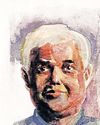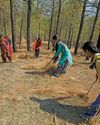
Can science help humans defy death?
Defying death is a tall order because it means that lots of systems need to be kept going. The breakdown of these systems is indeed the common cause of death. You could also die of an infectious disease or accident.
Some people feel that if you can address the underlying common causes, you could postpone death by preventing or slowing down ageing. But can we slow it down to an extent that we live well beyond our natural limit, which is about 110 years or so? Very few people live past 110, and only one person has lived past 120 [a record held by Jeanne Calment, a Frenchwoman who died in 1997 at the age of 122]. It would take some fundamental breakthroughs to go beyond that limit. I do not think it is as easy as some people claim it is.
Could improvement in health infrastructure or medicines push that limit beyond 110 years?
It would be very hard because there are other issues, like general frailty and tissue breakdown. For example, we have the drug semaglutide, which is being used to treat diseases that accelerate ageing, like obesity. But I do not know how much time that will buy us.
A lot of focus is on healthy ageing, which is not about extending life but staying healthy for a bigger fraction of your life, so that one does not spend two decades or so in really poor health at the end. The idea is to stay healthy so people can move around and be independent.
My father, until he was about 92, used to go on eight-mile (over 12 km) walks. He cooked and did laundry by himself. At 98, he still does these chores, but finds it hard to walk now. You can see a decline between 92 and 98, even in a relatively long-lived individual. So, the question is whether you can compress that period of decline so that you are healthy for a bigger fraction of your life.
Diese Geschichte stammt aus der June 16, 2024-Ausgabe von Down To Earth.
Starten Sie Ihre 7-tägige kostenlose Testversion von Magzter GOLD, um auf Tausende kuratierte Premium-Storys sowie über 8.000 Zeitschriften und Zeitungen zuzugreifen.
Bereits Abonnent ? Anmelden
Diese Geschichte stammt aus der June 16, 2024-Ausgabe von Down To Earth.
Starten Sie Ihre 7-tägige kostenlose Testversion von Magzter GOLD, um auf Tausende kuratierte Premium-Storys sowie über 8.000 Zeitschriften und Zeitungen zuzugreifen.
Bereits Abonnent? Anmelden

THE CIRCULARITY ARGUMENT
A circular economy can help India achieve its developmental aspirations while following the low-carbon pathway. It will also help address the challenges of waste management, pollution and overexploitation of natural resources. Industries are already innovating to reuse high-volume wastes and have shown that the transition can usher in both environmental and financial windfalls

Banking on flawed drug voluntary licences
The Medicines Patent Pool is pushing for more VLs, but its bad deal with Novartis on a cancer drug shows the pitfalls

Lasting solutions
For the first time, the UN has recognised the role of indigenous communities in tackling aridity. A repository of traditional knowledge India has the wherewithal to lead the way

IMD at 150
India's journey into modern weather forecasting took a decisive turn 150 years ago with the establishment of India Meteorological Department during the British rule. The agency has come a long way since then, shaping the way the country predicts and responds to its diverse climate challenges

Every drop counts
In drought-prone Marathwada region, 14 villages have managed to counter water shortage by budgeting the resource

Threat to survival
Hollongapar Gibbon Sanctuary in Assam faces ecological challenges as railway electrification and hydrocarbon exploration endanger its fragile biodiversity

'Migration is going to be a battlefield'
AMITAV GHOSH is one of the foremost chroniclers of our times. His literary sojourn includes writings on topics that range from languages to climate change to human lives. His latest book, Wild Fictions, brings some of his works on these issues under one title. In a conversation with RAJAT GHAI, Ghosh shares his views on the future of human movement. Excerpts:

Face of future
California wildfires confirm forest fires are intensifying in a hotter world, emitting substantial amounts of greenhouse gases and reinforcing global warming

Friends of the forest
Residents of 30 villages in Uttarakhand establish a model for public participation in saving forests from wildfires

Climate-crazy playbook
Just hours after his second (and final) term began on January 20, US President Donald Trump unleashed 46 presidential actions. Several of these are centred on the US' climate commitments, energy transition, migration and trade policies, and are likely to have negative global implications